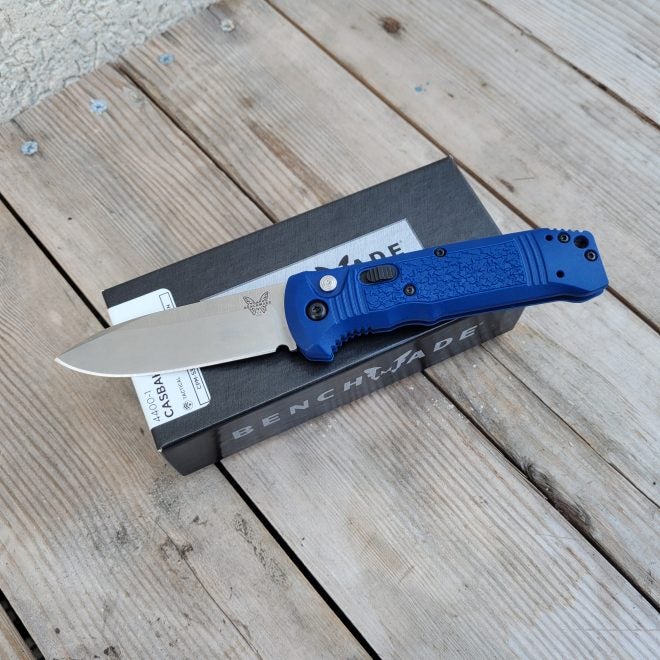
I finally got around to getting a new pocket knife this year after beating the shit out of a Kershaw Dividend for the past couple of years. I went with a much nicer (and expensive) Benchmade Casbah 4400-1 in blue grivory, with a drop point plain-edged blade. This knife cost about 3 times what I paid for my Kershaw, and so is the Casbah 3 times the knife. I bought the Benchmade about 2 months ago now and have been using it the same as I did with the Kershaw, and then some. I want to be clear this is not a destruction test. I didn’t try to push the knife to its breaking point. The purpose of this was to just see how well this will hold up to average daily use for most and a bit more.
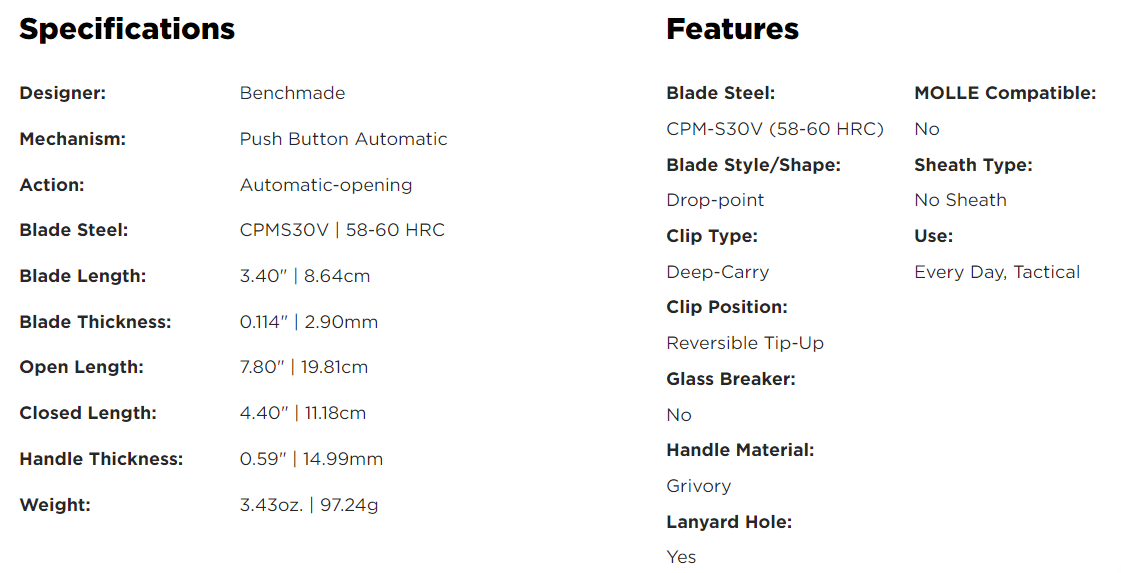
Going off the specs of the knife alone it is a well-rounded knife, a push-button automatic knife great for just general daily use. A decent blade size made with a good quality steel that has good corrosion properties, a big factor for me. At first glance the packing is a lot nicer than the Kershaw’s was. It came packaged in a nice box instead of a clamshell package. There is a Styrofoam insert inside the box to protect the knife in transit. The Casbah comes with a small pouch for the blade along with all the legal and care papers about Benchmade. So pretty standard for higher-end knives but still nice.
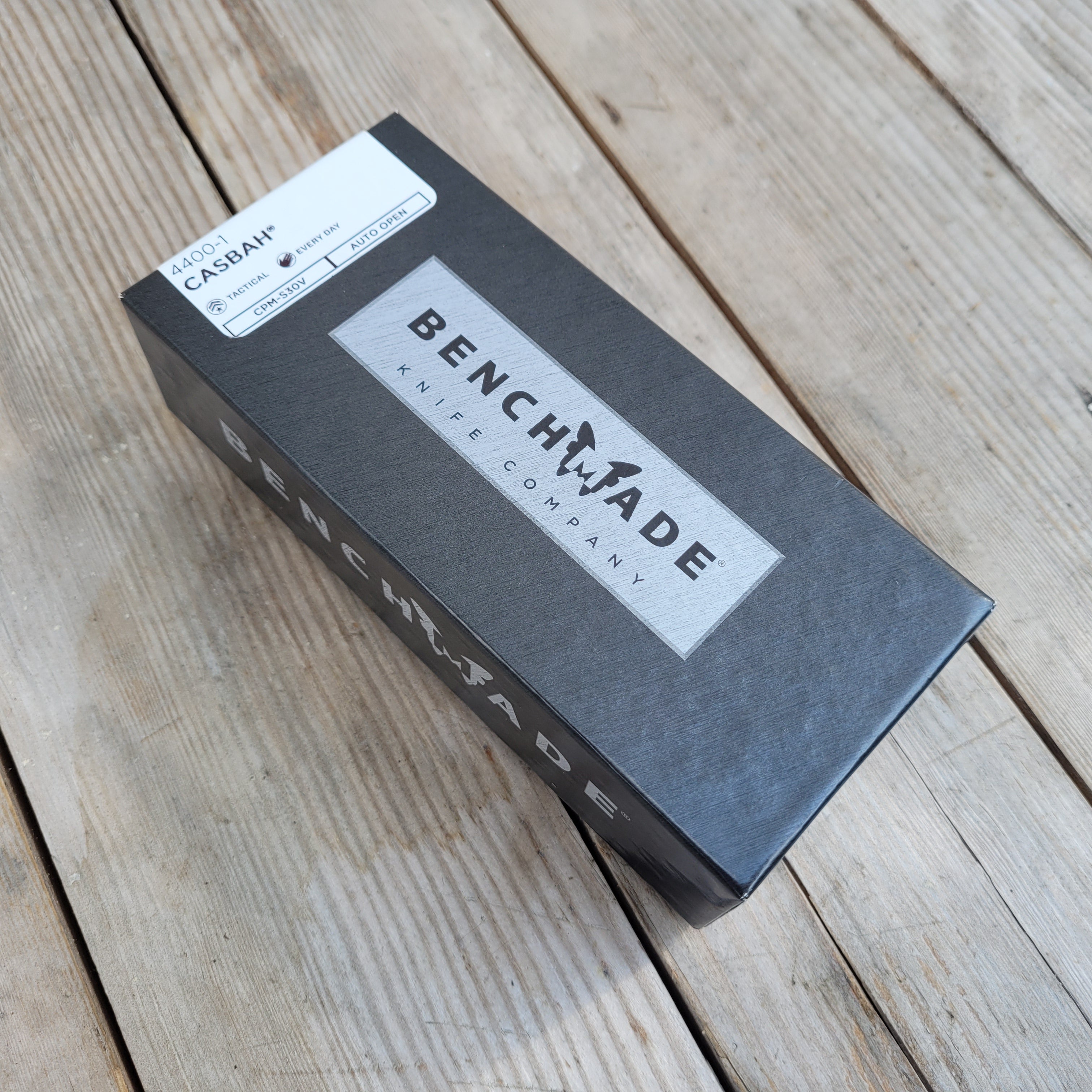
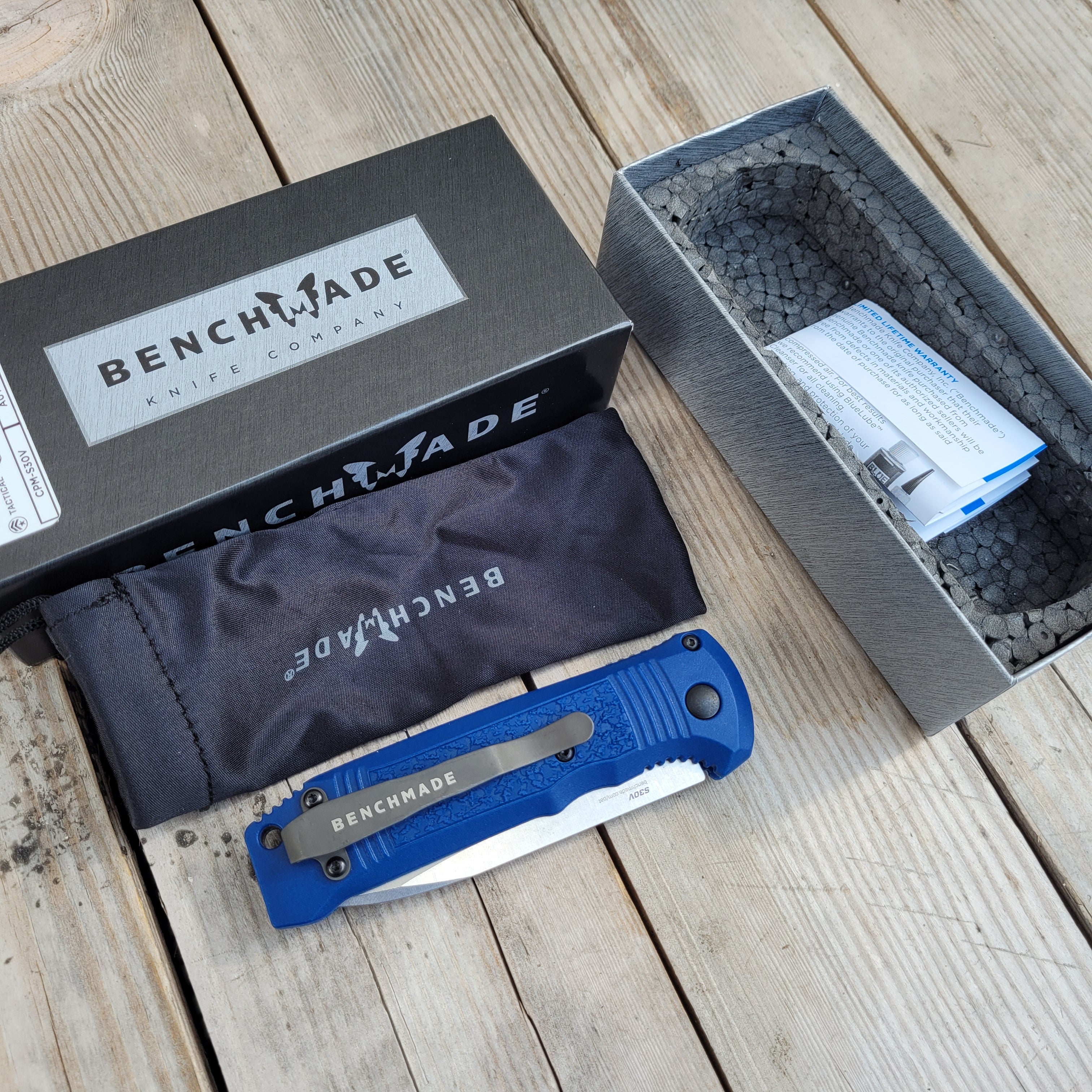
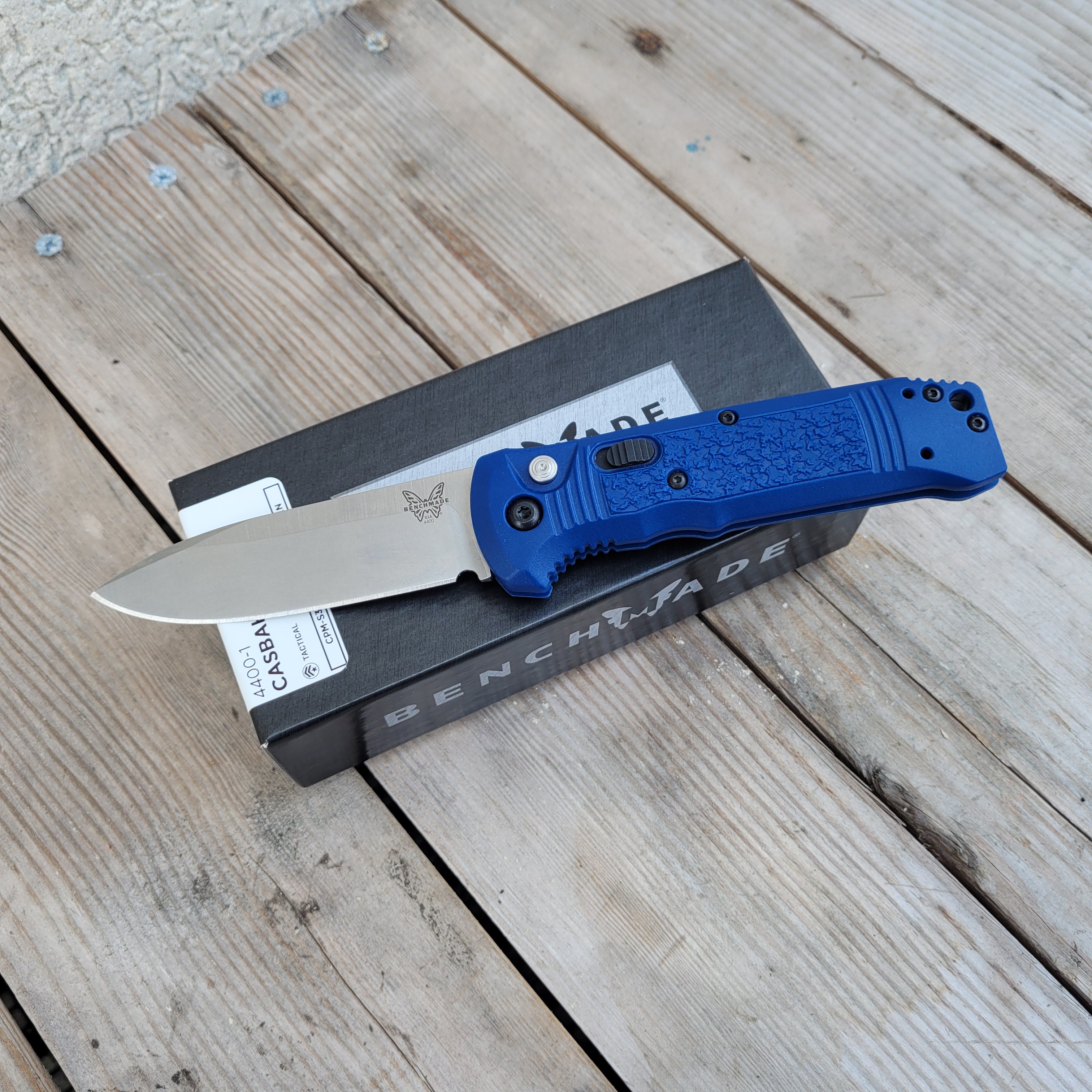
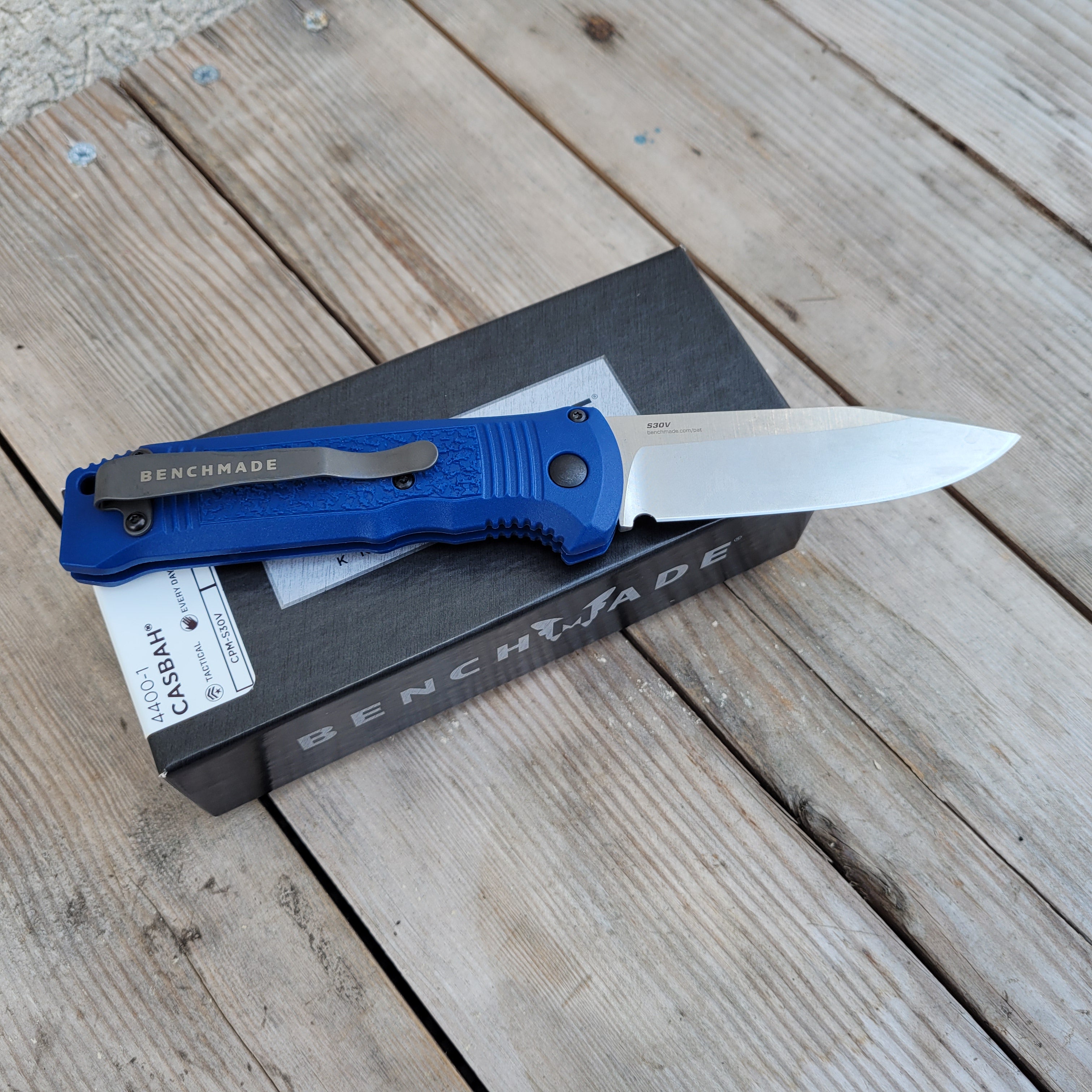
The initial read on the Casbah is, thick. The Grivory scale makes for a thick knife and a larger presence in your pocket. The Casbah is about 30% thicker than the dividend, but having plastic scale instead of steel/aluminum scale corrosion isn’t a concern. I had a lot of problems with the Dividend’s scale holding moisture and salt and causing corrosion before. The knife grip texture is very grippy even when wet. The jimping on the back of the knife handle is part of the action and is made from metal. The safety on the knife is a bit sharp but honestly, I haven’t used it at all unless I was just fidgeting with the knife. The button for releasing the knife is well-machined and well-rounded. The design of the handle for the button does a good job of keeping you from accidentally pressing it. My biggest complaint right away about the Casbah was the factory edge. You could see the scratches from the sharpening job, the knife wasn’t dull but definitely not the sharpest knife out of the box.
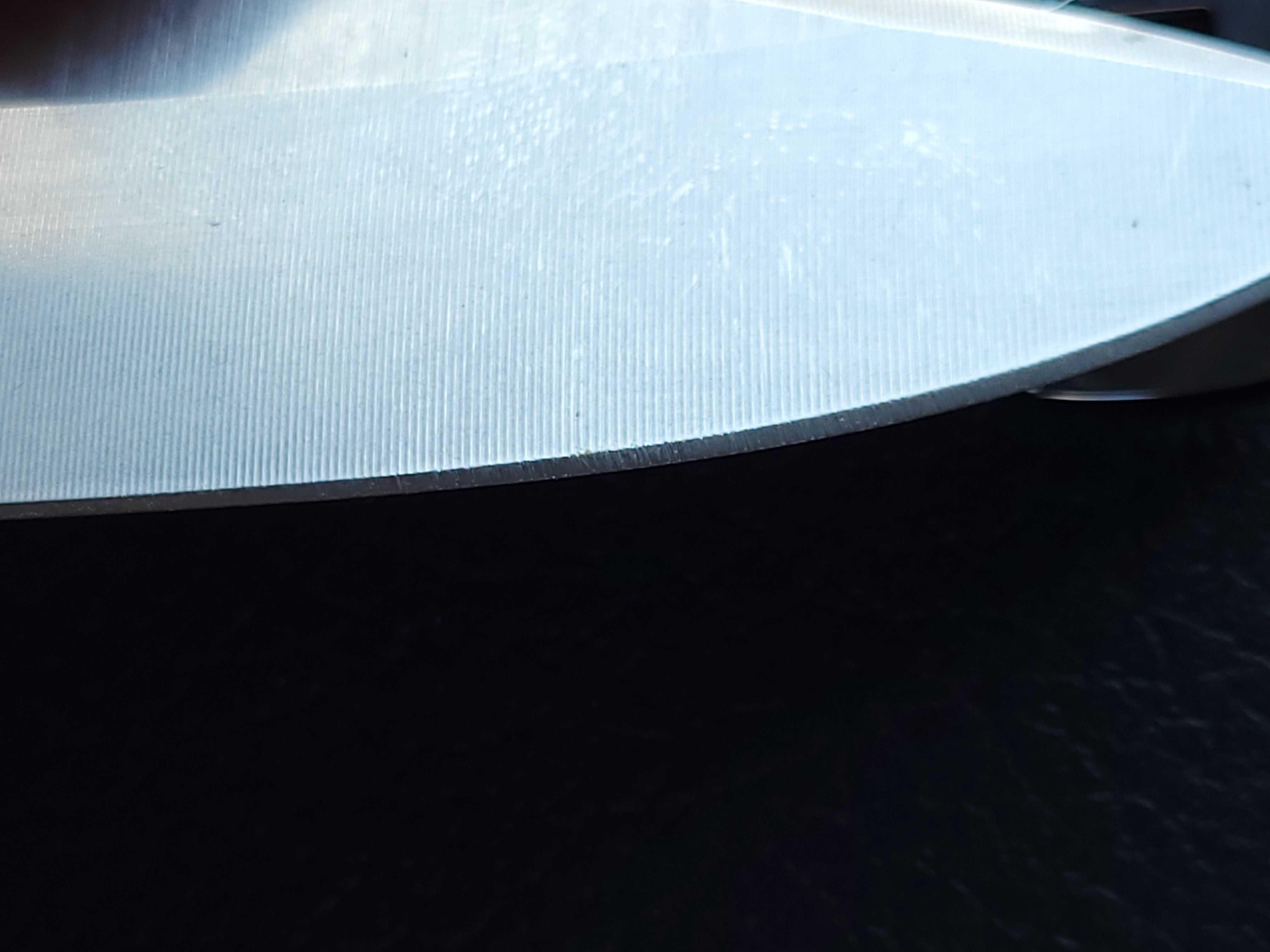
Ok beyond the factory edge everything else is good on the knife. There’s no side-to-side play in the joint of the knife, and the automatic action is strong. I need to say there really aren’t any aftermarket modifications you can do with the Casbah. While I don’t consider this a negative for some who like to tinker or give their knives a personalized touch this might be negative.
So my plan for testing the knife was to just use this knife till I needed to re-sharpen it. To just use it as an average person would till it needed some maintenance. I run a restaurant that has a lot of live seafood so my knives deal with a lot of moisture and salt along with a lot of boxes to break down. Along with some fishing and breaking down some fish, there will be no destruction tests in this review. I did not baton any wood, pry anything, or cut anything harder than some fresh bones.
As soon as I got the knife I had to move 10 cases of live flounder into the tanks, it was just tape and foam boxes so nothing tough on the edge. While I felt the edge could have been sharper, it did make short work of opening all the live fish bags and boxes. So it was definitely a workable edge. The knife got thoroughly dunked in saltwater and was given a rinse in fresh water after everything was done. Then it was wiped down to dry it off, but there was still moisture in the handle.
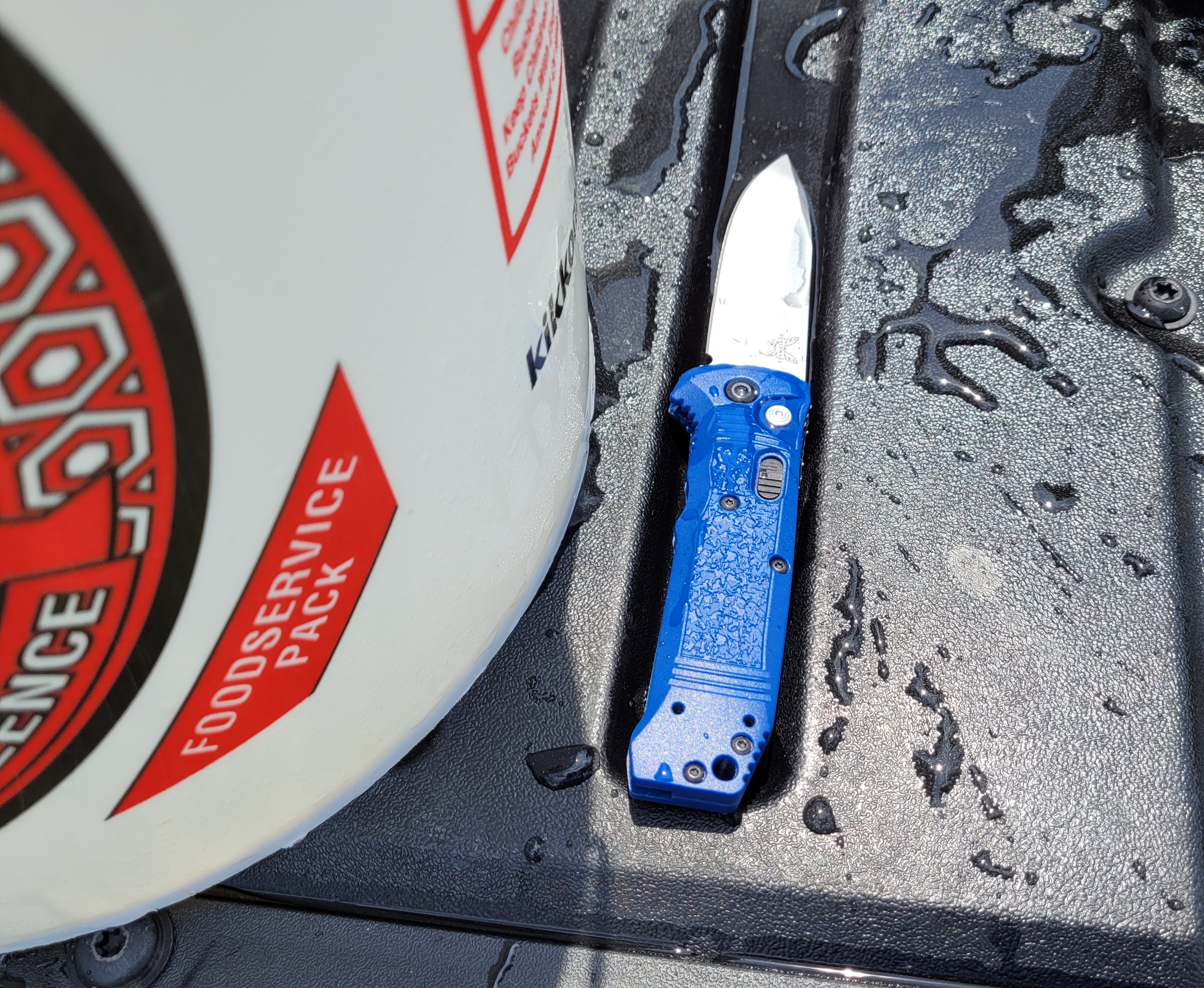
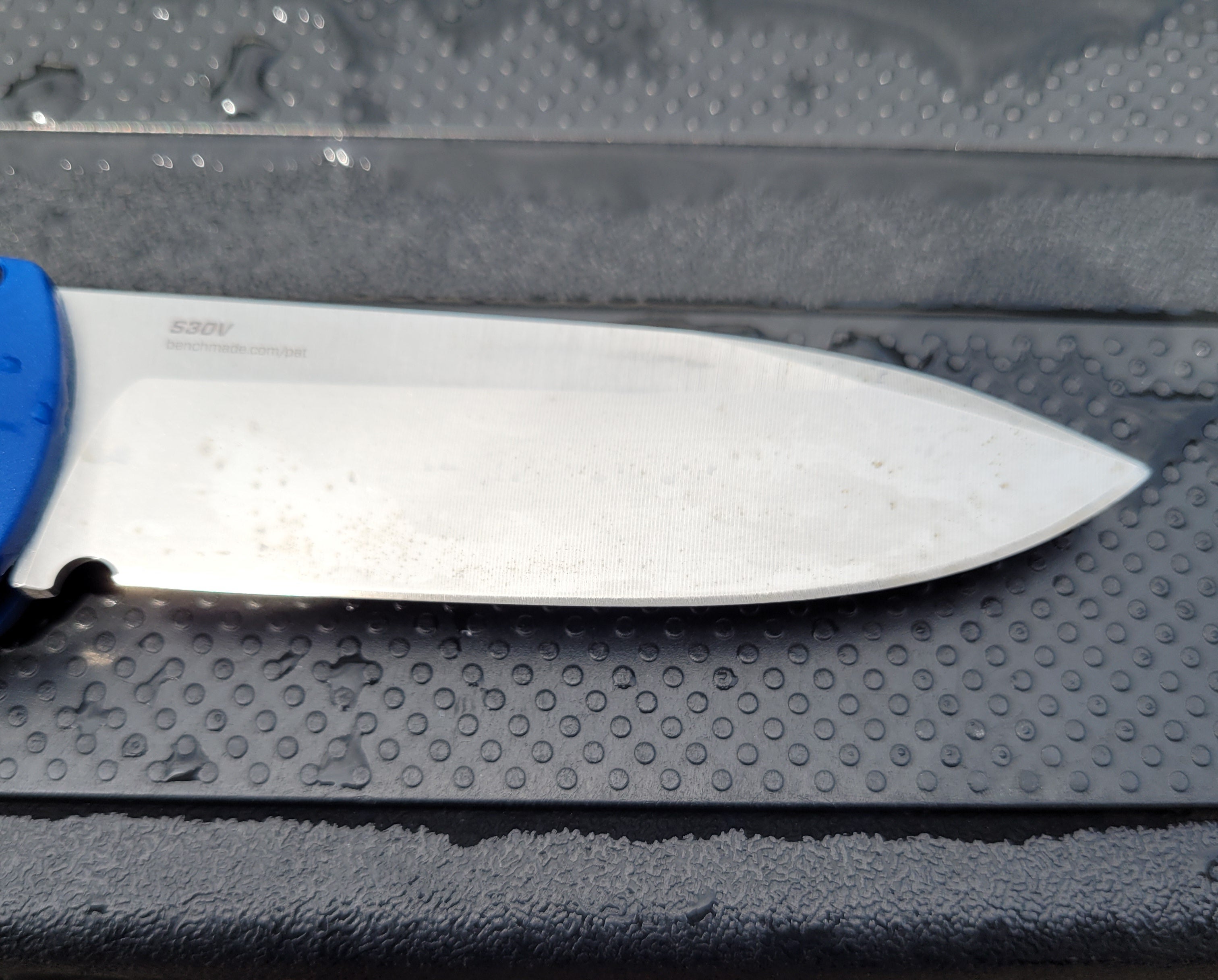
I put the Casbah back in my pocket for a few hours and checked it later in the day to see how the steel was holding up. The residual moister and probably salt did cause some speckling of light surface rust. Nothing serious but just a little staining, 95% of it just came off the steel when rubbed with some paper towels. So this is looking good, the Kershaw didn’t hold up as well when it came to salt exposure so the Benchmade is already doing better.
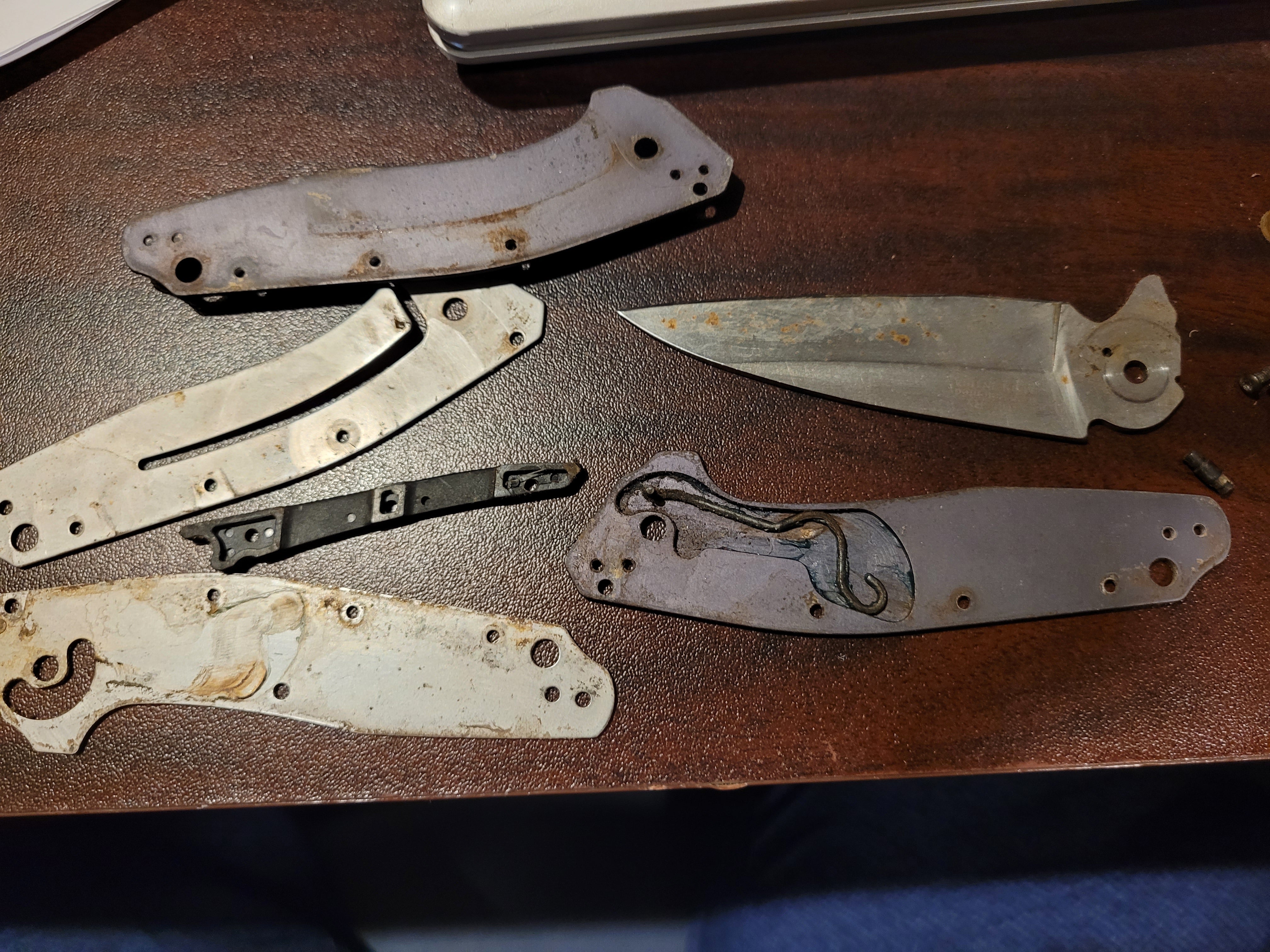
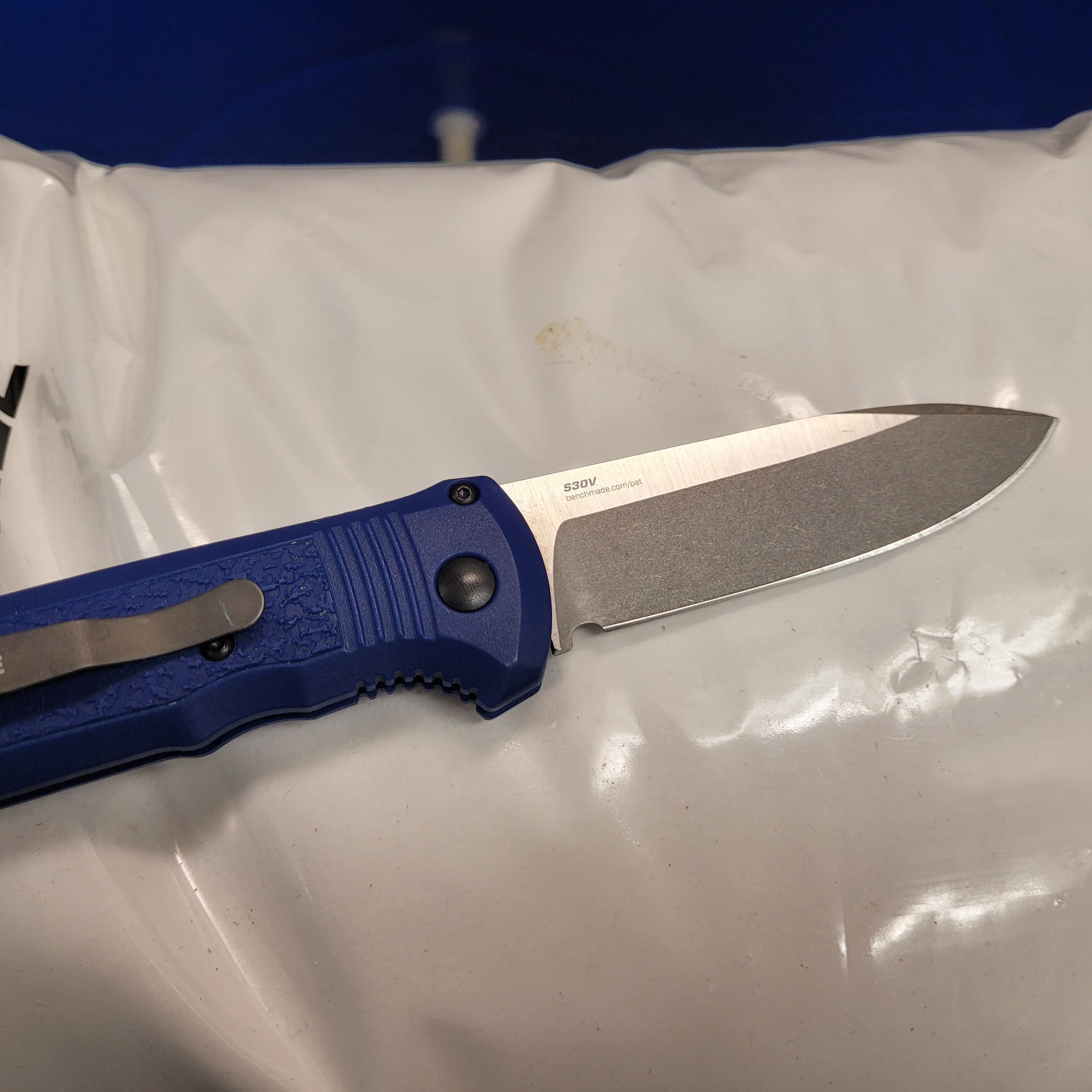
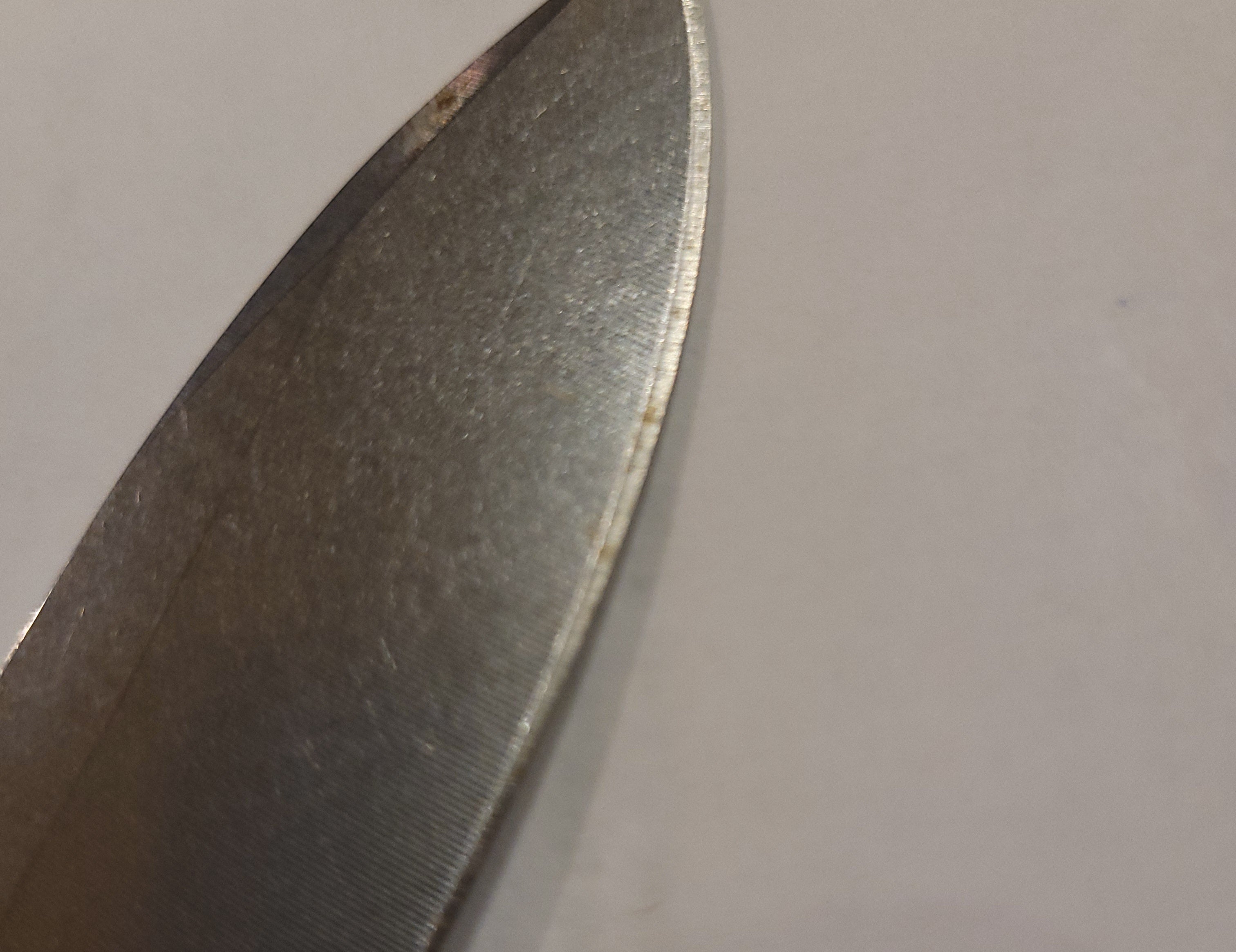
Salt and knives don’t make the best of friends and I wouldn’t recommend sticking a knife you like into a bag of aquarium salt. The stuff is super fine and sticks to about everything. Same treatment again for the knife, rinse with some fresh water, pat dry with paper towels, and back into the pocket it goes. And of course a few more spots of light rust here and there. 2 months of this sort of salt treatment and no substantial levels of corrosion has occurred to the knife on any parts aside from light spots of rust that can be wiped away.
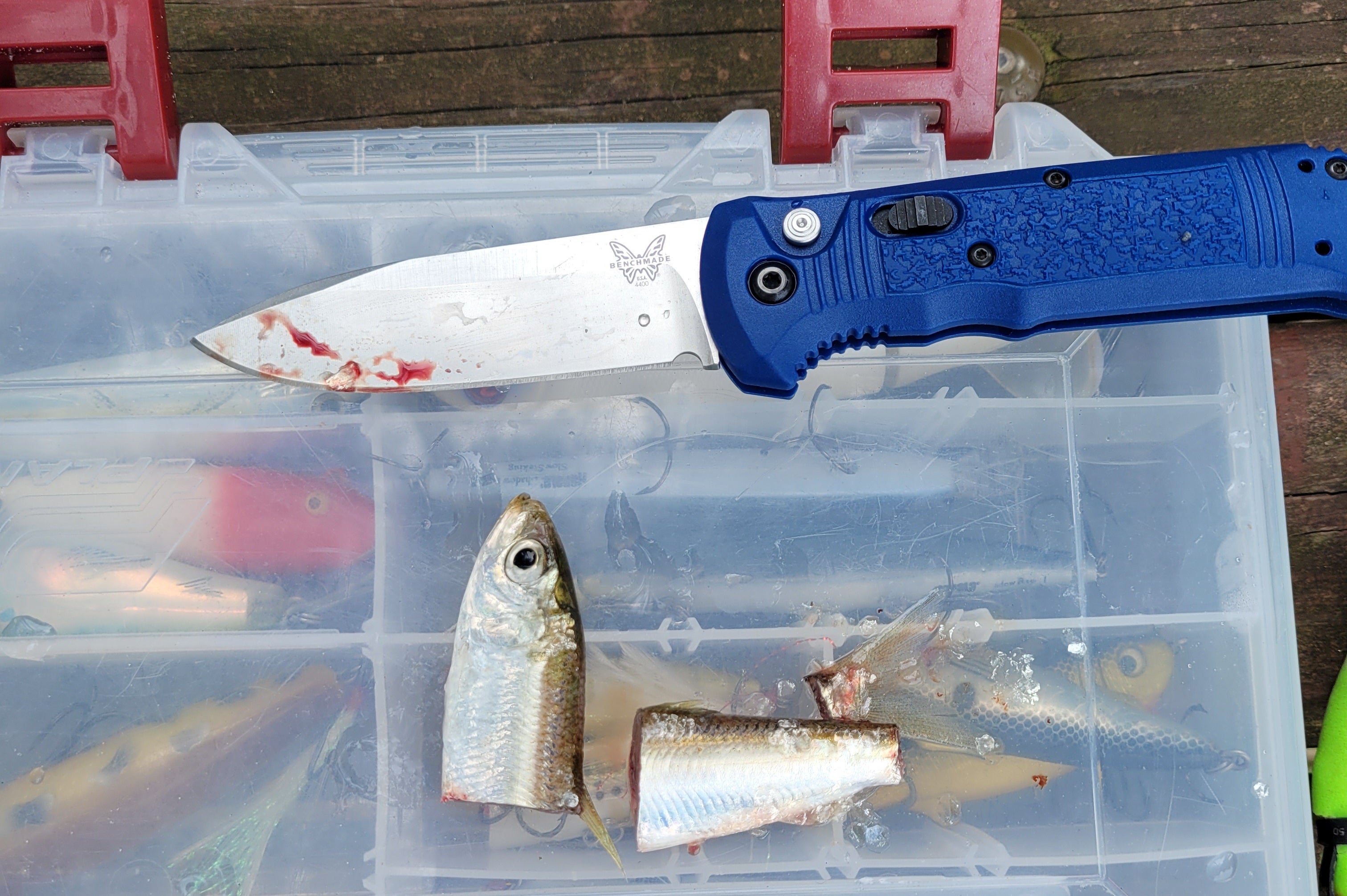
Now for fishing use, while I couldn’t make it down to the gulf for a hard corrosion test of the knife, but I was able to make it out to the lake several times to see how the casbah held up. It got the bait knife treatment and was used to hack up herring and bluegill during these trips. Nothing unusual to say about it, it cut up the bait well and got covered in scales. Cleaned up easily and stayed grippy when wet. When we caught some catfish the knife was used to dispatch and break down the catfish. This involved using the blade as a brain spike to kill the catfish and then to go through their backbones when cleaning them.
The casbah held up well, there is a decent amount of meat to the blade so no flexing when going through bones. To just test how it would hold up to chopping a bit, I used it to go through the vertebrae instead of between them. And even for a smaller knife it did well with no edge deformation or chipping. But I do have to say it struggled a little bit after a couple of trips when it came to cutting the skin of the catfish. The edge was still sharp enough to cut most things, but the catfish skin took a few slices to get through when gutting a couple of them. Again I got to say the texture on the handle is very grippy, even with catfish slimed hands the knife was easy to keep a tight grip on.
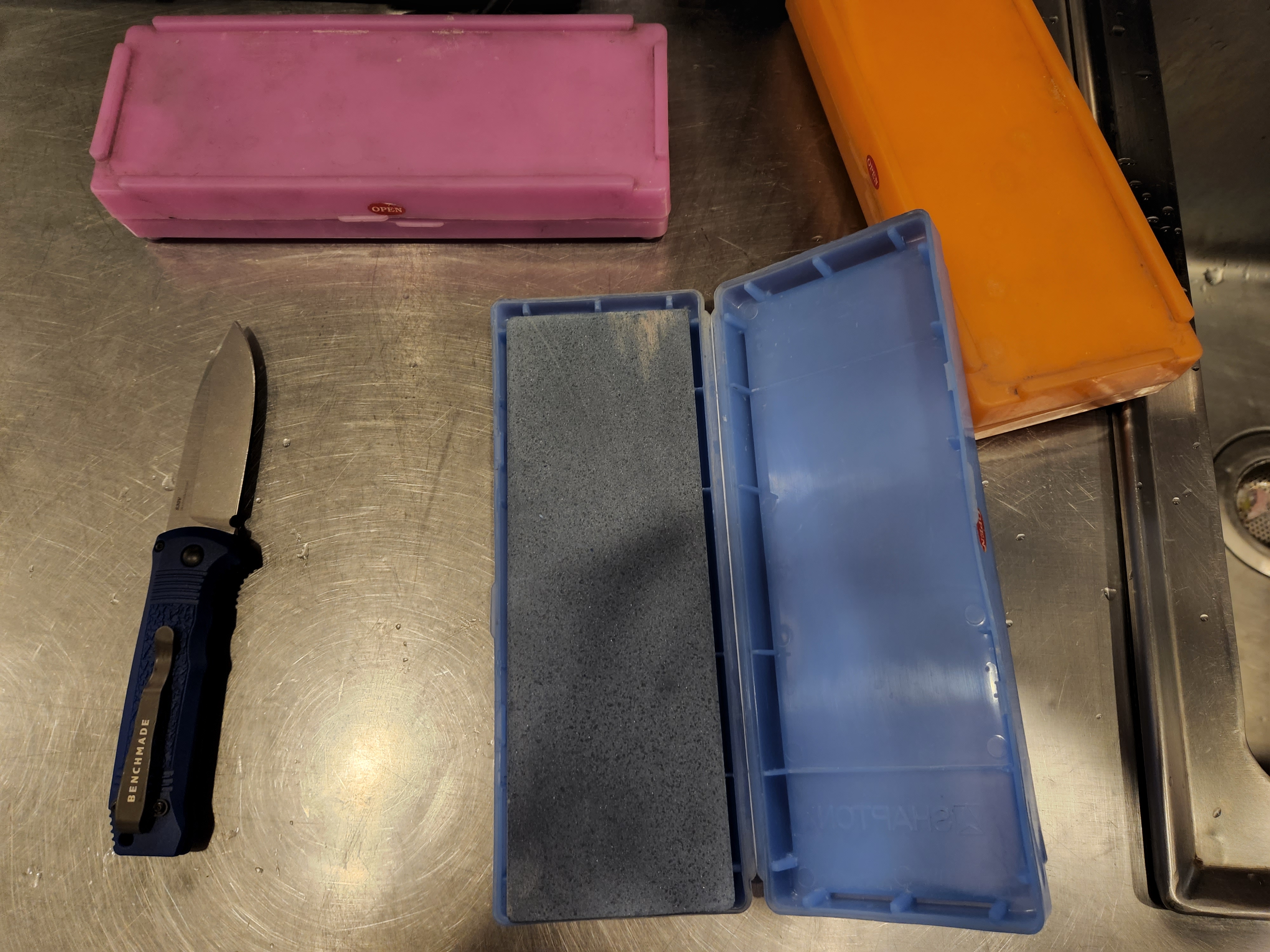
The last catfish I cleaned, for the catfish coubion, was right when I decided the knife needed to be sharpened. It was still sharp enough to cut open and break down boxes, but too dull to easily push cut paper. So it was time to sharpen it, I used 3 Shapton Kuromaku Ceramic whetstones to do this. Starting with a course 320 grit stone to remove the original factory scratch pattern and start the edge fresh. I sharpen the blade till a burr forms then flip the blade till another burr forms, keeping the same grind angle for both sides. Once the burr formed on the second side, I moved on to the next stone. The next stone was a 1000 grit stone which gives you a nice sharp edge but it can be sharper by using a higher grit finishing stone. The final stone was a 5000 grit stone used as a finishing stone, which gives a nicer fine edge.
I’d say you don’t need to go this in-depth with sharpening your knives, especially for a pocket knife, but this was a test to see how well the blade sharpened. And I would say this was a relatively easy sharpen blade. It was too easy where you have to worry about how durable the edge is but not hard to sharpen either. A good middle ground to be at for the knife.
Overall I would say this purchase was definitely worth the money, yes it was three times the cost of my old knife. But in every aspect, it’s proven itself to be a better choice. The corrosion resistance wasn’t even a contest, the old knife would rust just being near the ocean in my pocket all day, while the casbah can be dunked in salt and rinsed and be fine. The build is much nicer, the joint is rugged and has no play to it. And the sharpening of the knife is easy but not too easy. The old knife was a breeze to sharpen but that edge was gone pretty quick, the steel was too soft. So yes three times the cost, but definitely see myself having this knife for three times as long.
